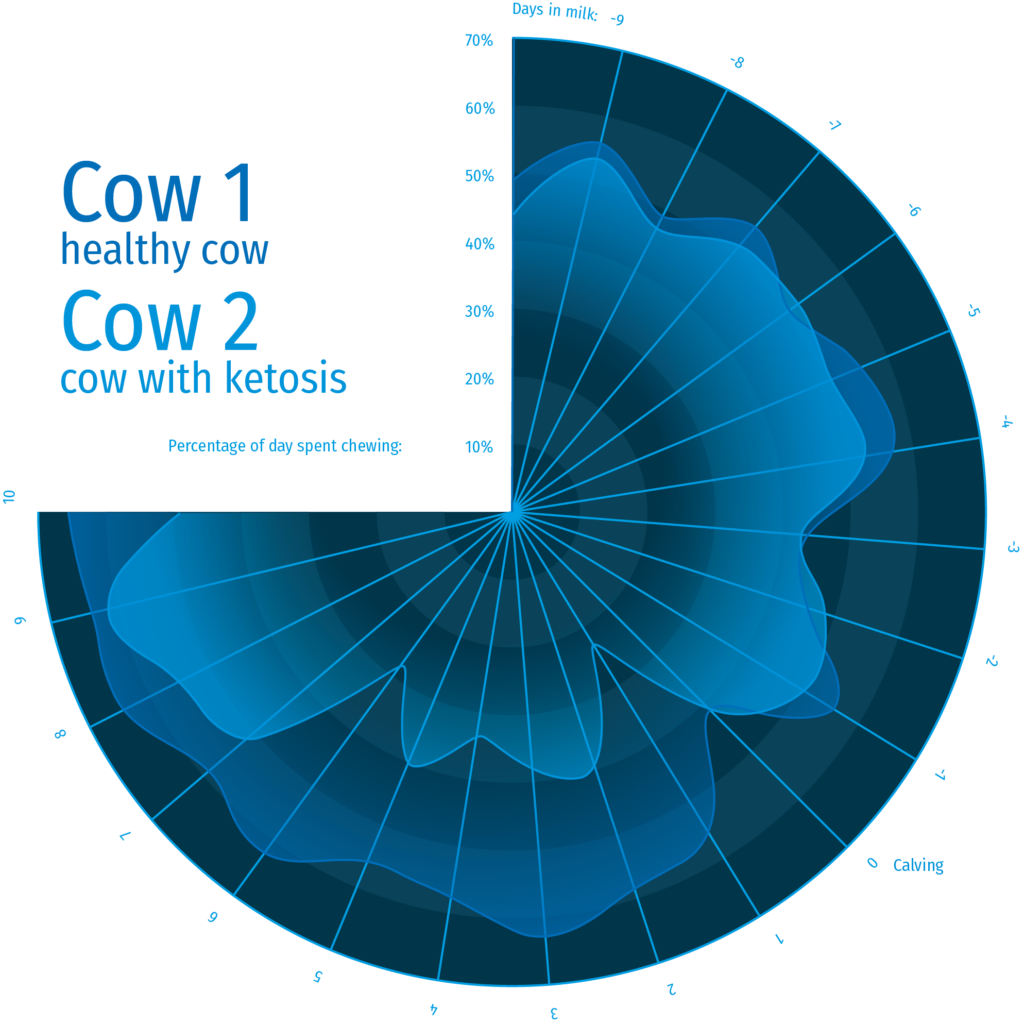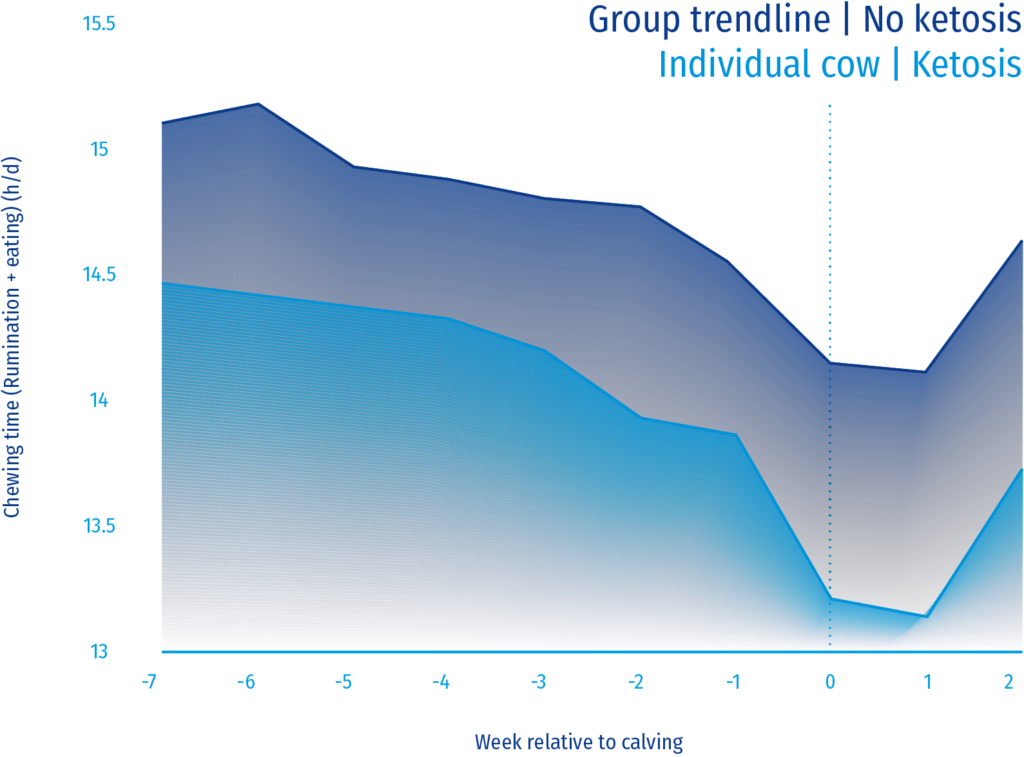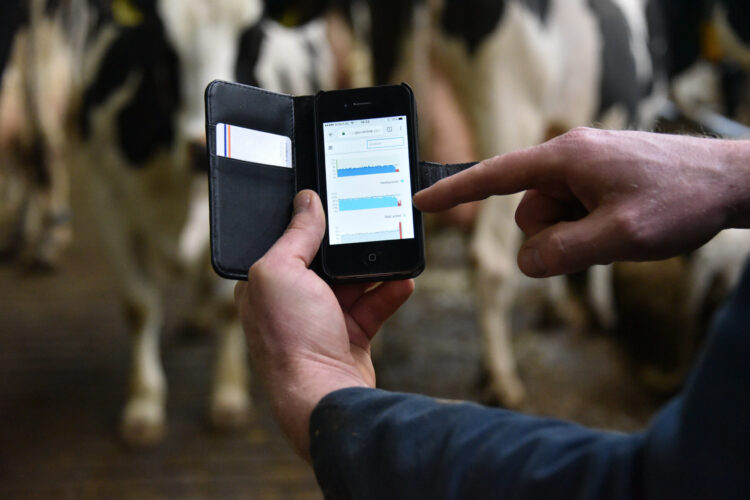If you own an activity monitoring system, you know the efficiencies you can gain on farm. Time, labor and decision making to name a few. But, with any piece of technology, there are likely more uses and efficiencies to gain – ones that can help you maximize your return on investment. One area to advance efficiency in is ketosis detection.
“Ketosis monitoring is a natural next step in maximizing the capabilities of an activity monitoring system,” says Eveline de Pont, product owner of Nedap, the company that developed the technology behind Alta COW WATCH. “With activity monitoring, each cow can be monitored individually through the transition period, and you can compare potential problem cows to the group, to learn if it’s a pen-wide management issue or a ketosis case. Farmers looking at this data have been able to successfully decrease ketosis for better ROI.”
The results of early detection and prompt treatment (prior to clinical signs) can quickly add up. Ketosis alone can cost a 1,000- cow dairy with a 30% ketosis rate about $87,000 or €73,500 a year. By lowering the ketosis rate by just 5%, the dairy could save $14,500 or €12,250 per year.
Monitor individual transition cow activity.
Your activity monitoring system tells you a lot about each cow, including a cow’s chewing activity. Chewing activity (eating + rumination) can be a good indicator for ketosis. Look at a cow’s chewing activity 10 days before she calves compared to 10 days after she calves. You should see natural peaks and valleys. Chewing time crashes are normal at calving, but cows should begin to rebound within a day or two.

In a real-life example, the accompanied chart shows the chewing time difference between a healthy cow (Cow 1) and a cow with ketosis (Cow 2). Cow 1 bounces back quickly to normal chewing time after calving. Cow 2’s chewing time drops significantly the day before calving and stays depressed until day 6, when she receives treatment for ketosis.
Why didn’t this cow get treatment until day 6? She wasn’t showing clinical signs of ketosis. And even though an alert was sent about Cow 2’s increased inactivity (reduced chewing time), she wasn’t treated. In an ideal situation, Cow 2 would have been evaluated and treated as soon as the alert was sent (day 1), and she would have bounced back faster.
“For successful early detection and treatment, there has to be a mindset shift,” says De Pont.
“We have to get comfortable with letting the data tell us there is an issue versus waiting for clinical signs to appear. You have to fully put your trust into the activity monitoring system to reap the rewards.”
Compare the individual cow to its group.
Another ketosis indicator is how the cow is doing in comparison to her pen mates. Look at how a cow’s chewing time compares to the rest of her group. If the whole group is experiencing activity or rumination issues, check the pen and the pen’s ration. There could be a management issue at hand that needs to be dealt with, like nutrition or environment. If the rest of the group appears healthy compared to individual cow data, you might be dealing with a cow with ketosis.
This chart is an example of what a monitoring dashboard could look like. The dark blue line represents the average chewing time for a group of healthy cows. The light blue line represents an individual cow consistently chewing about an hour less than her pen mates, starting seven weeks before she calves. This is not normal and can indicate ketosis.
“A group or pen data pattern shows all cows are experiencing the same environment, nutrition and management,” says De Pont. “So, when data shows you a cow is off pace with the rest of the group, you can hone in on other factors, like disease, that can be specific to an individual.”
“If there’s one thing I’d recommend to farmers to get more from their activity monitoring systems – it would be to trust the alerts you receive and act on them,” says De Pont.

“Alerts exist for a reason and are there to help you catch things that go unnoticed by the human eye. Catching a disease like ketosis early can help you capture additional ROI from your activity monitoring system.”




